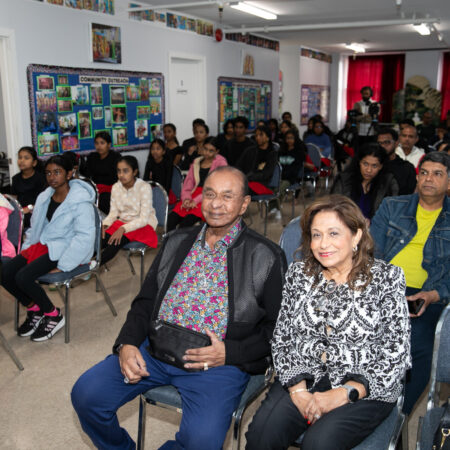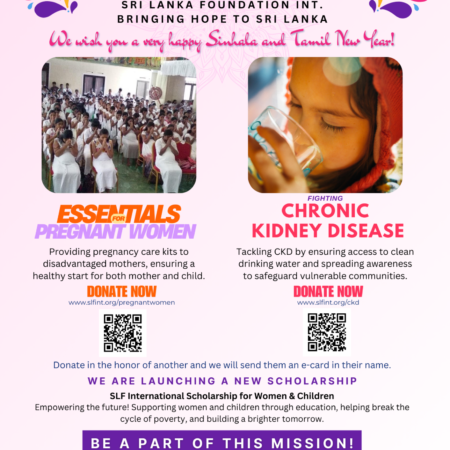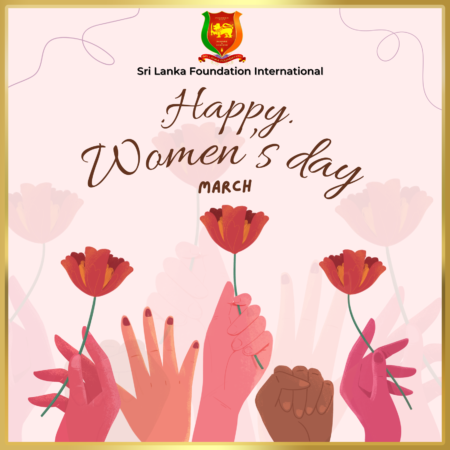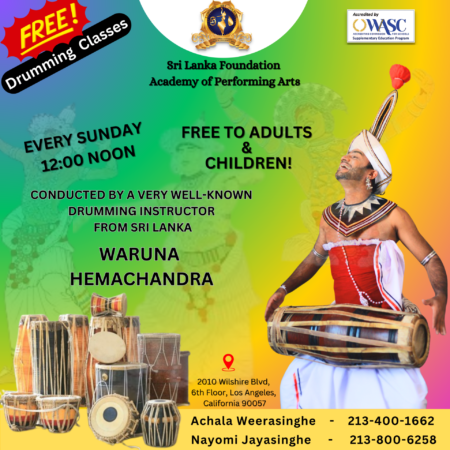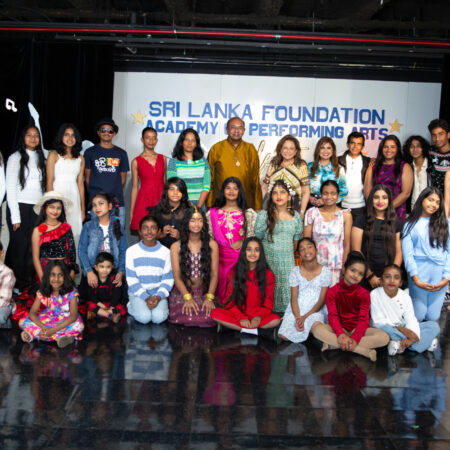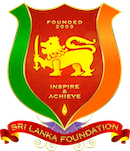Message from the Sri Lanka Foundation International To our beloved Sri Lankans and the wider community, During these uncertain times, as wildfires affect Los Angeles and its surroundings, our thoughts and prayers are with everyone impacted. We urge you to prioritize your safety and follow local emergency guidelines. Remember to stay informed, prepare evacuation plans, and support one another as we navigate these challenges together. The Sri Lanka Foundation stands in solidarity with our community and sends heartfelt wishes for the safety and well-being of all. Together, we will overcome this and look forward to brighter days ahead. Stay safe and strong! Helpful resources: https://www.disasterassistance.gov https://www.ca.gov/lafires/ https://www.lahsa.org/news?article=1014-resources-to-support-those-during-the-l-a-fires
Read More →
SLF Int, USA DONATED TO V2U COMMUNITY FOR THE FIFTH PROJECT IN DEHIATHTHAKANDIYA TO EMPOWER SELF-EMPLOYMENT AND FIGHT AGAINST HUNGER!!
Sri Lanka Foundation International, USA, donated to the V2U Organization founded in Canada to support the fifth Project in Dehiaththakandiya, to prepare land for raising crops to cultivate a field which Ulhitiye Homalokha Thero spearheaded in five different areas in the Ampara District. The main objective of the V2U Community Organization is to educate Sri Lankans on food cultivation to create self-generating employment opportunities in agriculture and other related fields. Agriculture is essential to the Sri Lankan economy, engaging one-third of the working population. However, most farm households need more knowledge of production methods and face a financial struggle to access land for cultivation. These obstacles constrain their ability to compete in the market and increase their incomes. In response to these challenges, Sri Lanka Foundation International and V2U Community Organization are partnering on the Supporting Opportunities in Livelihoods Development projects, which train farm households in the country’s eastern regions
Read More →
Read More →
SLF Int’l USA DONATED TO V2U COMMUNITY FOR THE THIRD PROJECT IN MONARAGALA TO EMPOWER SELF-EMPLOYMENT AND FIGHT AGAINST HUNGER!!
Sri Lanka Foundation International, USA, donated to the V2U Organization founded in Canada to support the third project in Monaragala, to prepare land for raising crops to cultivate a field which Medagama Chandaloka Thero spearheaded in three different locations. The main objective of the V2U Community Organization is to educate Sri Lankans on food cultivation to create self-generating employment opportunities in agriculture and other related fields. Food insecurity in Sri Lanka will likely worsen amid poor agricultural production, price spikes, and ongoing economic crisis. An estimated 6.3 million people in Sri Lanka face moderate to severe acute food insecurity. Their situation is expected to worsen if adequate life-saving assistance and livelihood support are not provided. To avert a further deterioration of food security conditions and to support the restoration of agricultural production, the Chairman of the Sri Lanka Foundation International, USA, Dr. Walter Jayasinghe’s vision for this project is a
Read More →
Read More →
SLF Int, USA DONATED TO V2U COMMUNITY FOR A SECOND PROJECT IN MAHIYANGANAYA TO EMPOWER SELF EMPLOYMENT AND FIGHT AGAINST HUNGER!!
Sri Lanka Foundation International, USA, donated to the V2U Organization founded in Canada to support the second project in Mahiyanganaya, to prepare land for raising crops to cultivate a field which Keenathumulle Chuulawansa Thero spearheaded in five different locations. Agriculture is an important part of the Sri Lankan economy, engaging one-third of the working population. However, most farm households have limited knowledge of production methods and also face a financial struggle to access land for cultivation. These obstacles constrain their ability to compete in the market and increase their incomes. In response to these challenges, Sri Lanka Foundation International and V2U Community Organization are partnering on the Supporting Opportunities in Livelihoods Development projects, which trains farm households in the eastern regions of the country on improved agricultural practices.
The Chairman of the Sri Lanka Foundation International, USA, Dr Walter Jayasinghe’s vision for this Project is a multi-faceted initiative to rebuild
Read More →
Read More →
SLF Int, USA Outstanding Performance By a Young Professional Award Winner Rukshan Henry De Silva for his excellence as a Principal Planner, Building Communities and the Environment.
Rukshan De Silva, The Waterloo alumnus, was named Australian Young Planner of the Year, recognising emerging leaders for outstanding contributions to their field. Among Rukshan’s many achievements, Planning Institute Australia lauded his commitment to innovation in the workplace, his collaboration with communities and government planners, and his volunteer contributions, including strategic land use planning in Peru and involvement with PIA’s National Settlement Strategy Team. Rukshan currently works as a principal planner at the New South Wales Department of Planning and Environment, where he’s leading the design of Australia’s most extensive ski town. Rukshan has always been a community man — volunteering his time to give back to his community in any way he can — something that’s continued since his elementary school days. Growing up, he was also very creative and interested in design. Put design and community together, and that’s the sweet spot, so designing communities for a living
Read More →
Read More →
US Ambassador to UN Food & agriculture agencies in Rome to visit SL
United States Permanent Representative to the UN Food and Agriculture Agencies in Rome Ambassador Cindy McCain will visit Sri Lanka from September 25-28 to highlight U.S. food assistance programs in Sri Lanka and reinforce the U.S. commitment and lasting partnership with the island nation. The US embassy in Colombo said that in addition to meeting with senior government officials and aid organizations in Colombo, Ambassador McCain will join U.S. Ambassador to Sri Lanka Julie Chung to travel to Central Province to visit schools, agricultural research facilities, and community organizations and meet with recipients and implementers of relief provided through U.S. government-funded humanitarian assistance programs. The United States is the single largest country donor to the three United Nations food and agriculture agencies, the Food and Agriculture Organization (FAO), the International Fund for Agricultural Development (IFAD), and the World Food Program (WFP). U.S.-funded UN projects showcase how the U.S. government, the
Read More →
Read More →
SLF INT, USA DONATED TO V2U COMMUNITY ORGANIZATION FOR A PROJECT IN MORAWAKA, MATARA TO EMPOWER SELF EMPLOYMENT AND FIGHT AGAINST HUNGER!!
The V2U Community nonprofit organization was established in November 2021 in Toronto, Canada, by Thiwi Gama and Sanjeewa Pushpa Kumara in the USA. The organization’s vision is to rebuild Sri Lanka with “no boundaries or bias” while empowering Sri Lankans in the fight against hunger by promoting the cultivation of privately owned land for food production. The main objective of the V2U Community Organization is to educate Sri Lankans on food cultivation to create self-generating employment opportunities in agriculture and other related fields. Sri Lanka Foundation International, USA, donated to the V2U Organization to support a project in Morawaka, Matara district, to prepare land for raising crops to cultivate a field which Puwakbadaowita Saranda Thero spearheaded. The Chairman of the Sri Lanka Foundation International, USA, Dr Walter Jayasinghe’s vision for this Project is a multi-faceted initiative to rebuild villages struggling educationally and economically. The ambition is a replicable model to create
Read More →
Read More →
Journey to the Colombo Lotus Tower How the Lotus Sutra and Mt. Emei of China hearken back to Sri Lanka for a community of shared destiny
In China’s foreign policy in Asia, Beijing has already rejuvenated the Buddhist diplomacy in Sino-Sri Lankan relations that began in the Han Dynasty (206 BC-220 AD). Over two millennia later, Sri Lanka will soon inaugurate the Chinese-built 350-metre-high Lotus Tower in Colombo, a symbol that manifests the ancient Buddhist peace and diplomatic intercourse between the two nations.
The Buddhist tower, which is seen from predominantly Hindu neighbor India, is a hallmark of China’s geostrategy associated with its Belt and Road Initiative (BRI). This purpose-driven skyscraper with its sophisticated telecommunications technology is the tallest in South Asia.
The Chinese re-engagement with the Buddhist “Kingdom of the Lion,” as the famous Chinese scholar-monk Faxian (337-422) had called the island in his Records of Buddhist Kingdoms, began the first recorded profile of Sino-Lanka religious foundation. Before arriving in the Anuradhapura Kingdom (377 BC-1017 AD) of Sri Lanka, Faxian travelled across India in search
Read More →
Read More →
USAID extends additional US$40 Mn in development assistance
USAID Administrator Samantha Power has announced an additional US$40 million in development assistance to help farmers purchase fertilizer and other vital agricultural inputs. “Subject to Congressional approval, the United States Agency for International Development (USAID) will invest this money to provide farmers with fertilizer and other vital agricultural inputs,” USAID said in a statement. “This critical support, implemented through the United Nations Food and Agriculture Organization, comes just in time for maximum benefit to the upcoming “Maha” planting season and will benefit up to one million farmers in need of fertilizer across Sri Lanka, which includes 53,000 farmers in need of emergency monetary assistance. USAID stands with the Sri Lanka’s people and is committed to providing this urgent support. The US Government will continue to explore ways to assist the country in meeting their immediate, medium, and long-term needs, and will continue ongoing efforts that boost sustainable economic growth, promote
Read More →
Read More →
USAID to provide US$ 20 Mn as humanitarian aid
USAID Administrator Samantha Power said USAID will provide additional US$20 million as humanitarian aid in addition to US$40 million which will be given to procure fertilizer to assist one million farmers. The total amount pledged by her, comes up to US$ 60 million. Ms. Power said political reforms and economic reform should go hand in hand. “Sri Lanka should ensure stable borrowing and stable balance of trade,” she added. (Yohan Perera) For more information go to:http://www.dailymirror.lk
Read More →
Read More →
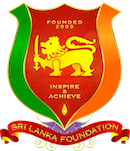








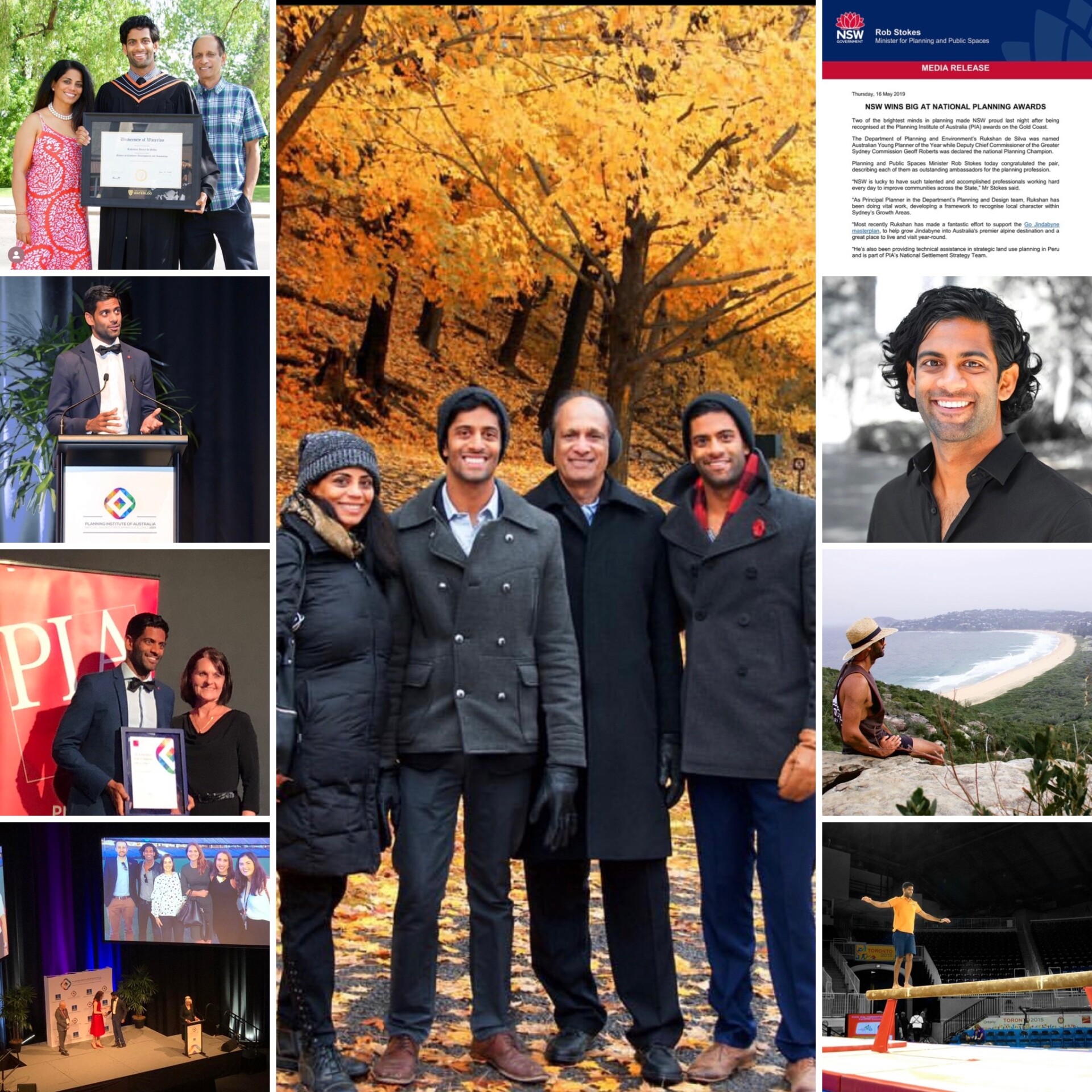







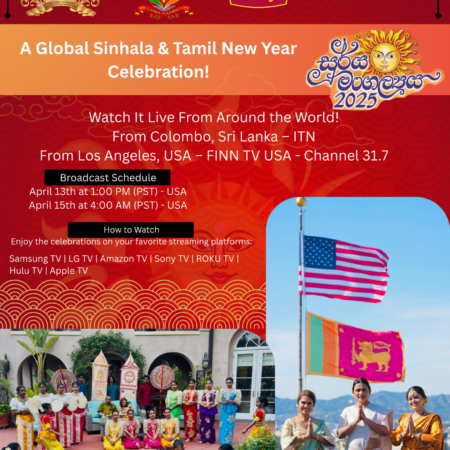
![TV-Poster-All-Exhibition-Sri-Lanka-in-Focus-USA-2025[1]](https://www.srilankafoundation.org/wp-content/uploads/2025/04/TV-Poster-All-Exhibition-Sri-Lanka-in-Focus-USA-20251-450x450.jpg)
